Rooted in heritage but alive to art’s next wave, Kriemler draws on Leon Polk Smith for a collection where fabric becomes line, and clothing an act of space
By Kenneth Richard
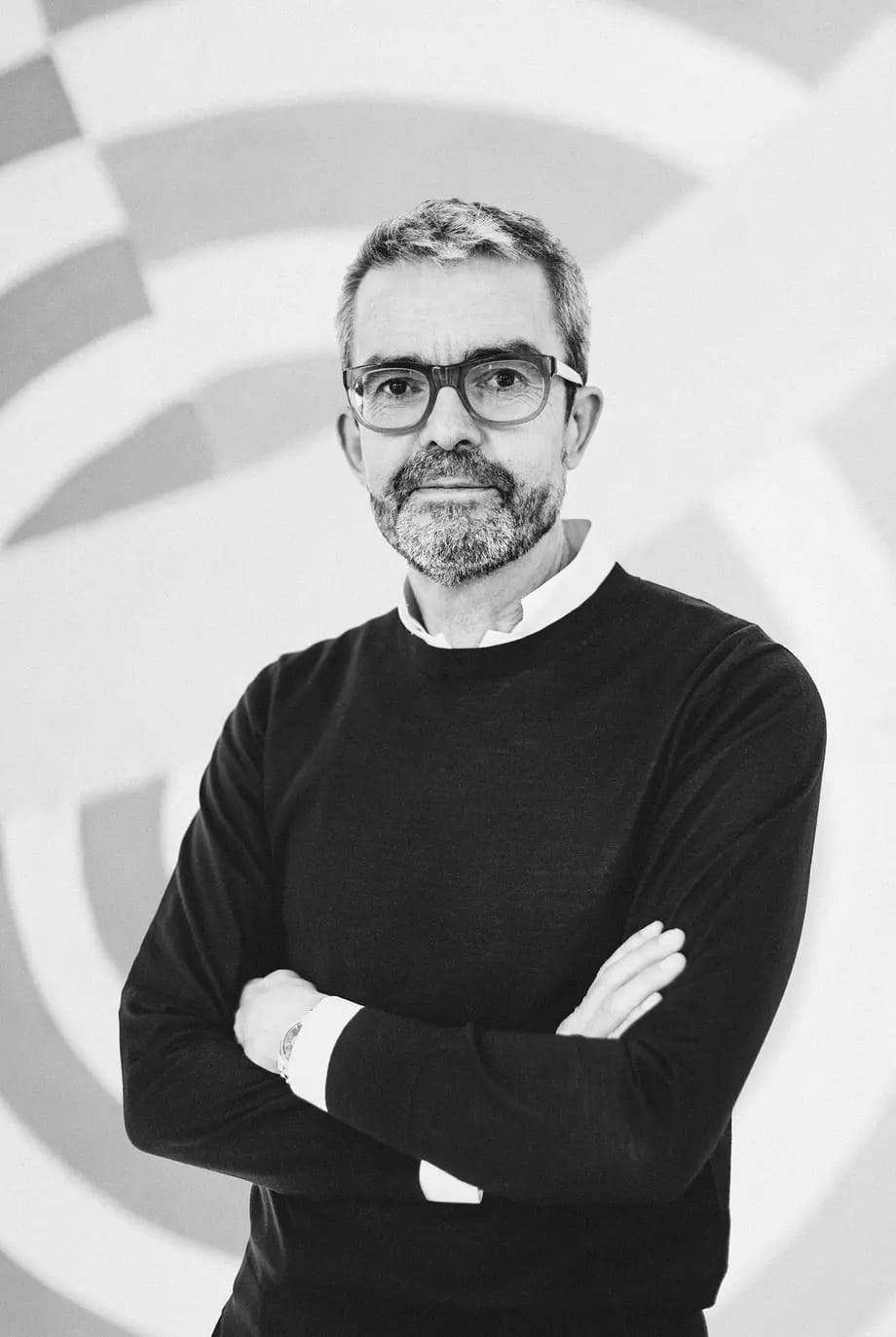
Albert Kriemler is one of fashion’s true gentlemen. Polished yet approachable, precise without pretension, he speaks with the ease of someone who has nothing to prove — but much to share. Backstage before his latest Akris show, he was thoughtful and unhurried, his words quiet but certain. You realize, in conversation, that he is as well-read and well-researched as any scholar, yet as open and warm as an old friend. Beside him, his brother Peter, Akris’s CEO, completed the picture of a family-led house run with intelligence and grace.
This season, Albert’s cultural compass pointed to Leon Polk Smith, the American abstract painter whose work straddled minimalism and maximalism. The invitation to the show itself bore one of Smith’s “Parabola” works — seven painted shapes connected into one — and the collection unfolded from that idea of unity.
“I met him first through Carmen Herrera, who spoke often of him,” Kriemler explained. “Later, when his retrospective opened in Zurich, I found myself drawn to his use of line. He said, ‘My art is principally a space, now a line, which separates a space and gives an essence.’ I thought: that is what I do with fabric. With one line, I can create essence.”

For Kriemler, this dialogue with art is never surface. It is structure. “He always insisted, ‘I’m not a minimalist, I’m a maximalist — I want essence.’ I feel the same. Minimalism is never minimalism in my hands. My fabrics — cashmere, silk, denim — they are maximal.”
The collection carried this duality. Round, multi-angled prints directly referenced Smith’s paintings, while volumes explored space as sculpture. He reimagined denim in bold, saturated colors — royal blue, yellow, red — an exercise in vibrancy. Embroidery became architecture: trapezoids linked into full fabric, decoration only where it formed the structure of the garment itself. “I hate decoration for the sake of decoration,” he said. “I want decoration to be the piece.”
The trapezoid, a recurring motif, doubled as both homage and symbol. “It stands for the ‘A’ in Akris,” Kriemler smiled. “It also recalls the aprons my grandmother wore when she founded the house. This year, we celebrate her legacy.”
What emerges in conversation is Kriemler’s cultural depth.
He does not pluck artists for convenience but engages with their lives, their struggles, their humanity.
He recounted Smith’s origins: the eighth of ten children, raised on a struggling Oklahoma farm, drawn late to art through education and resilience. “I admire artists who are not yet at the Ellsworth Kelly level of recognition,” he said. “Discovering their work, giving them voice, expands the world.”
That instinct — to look outward, to sense what is next in culture — is what makes Kriemler rare. Each collection is a dialogue: fabric with line, art with fashion, history with modernity.
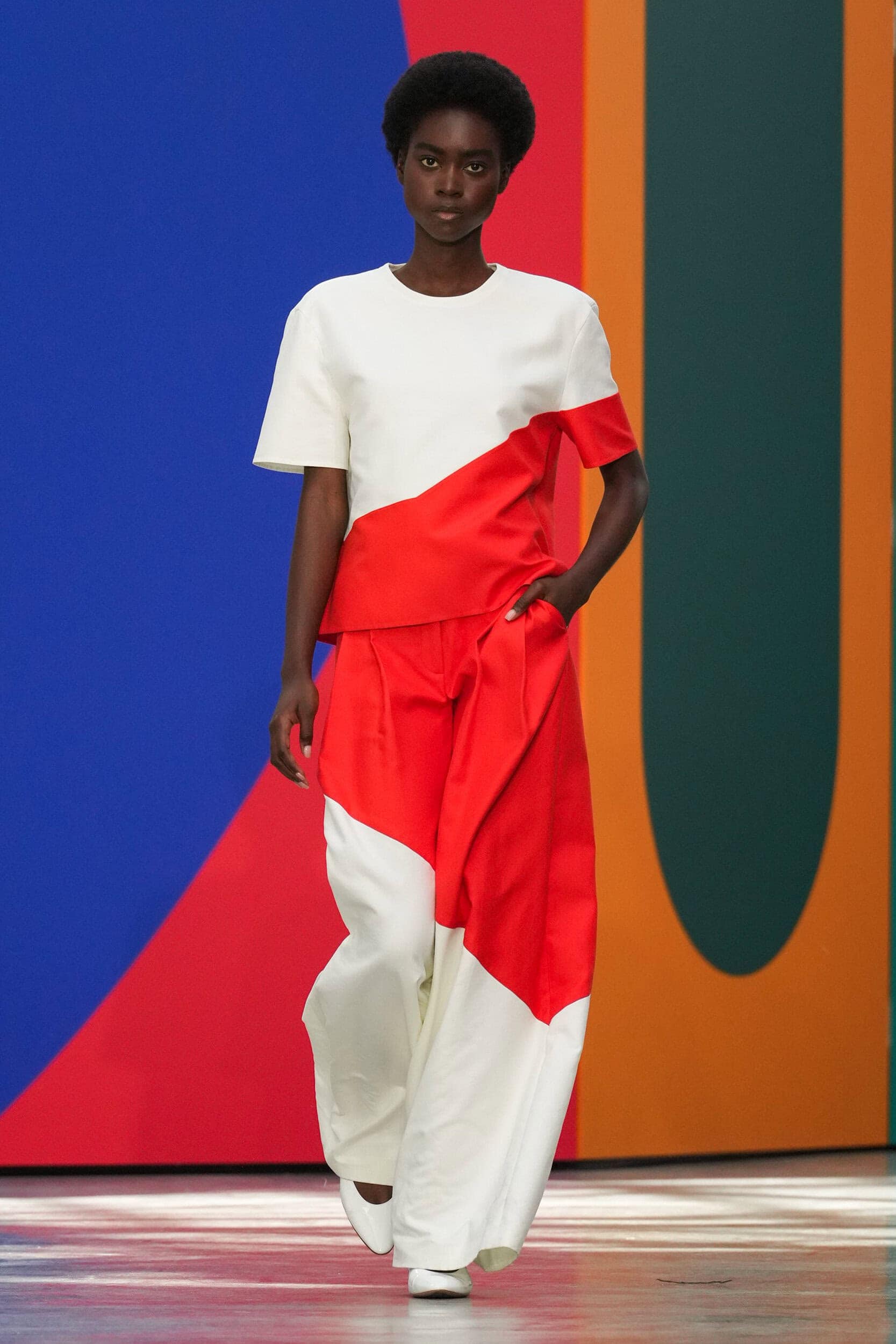
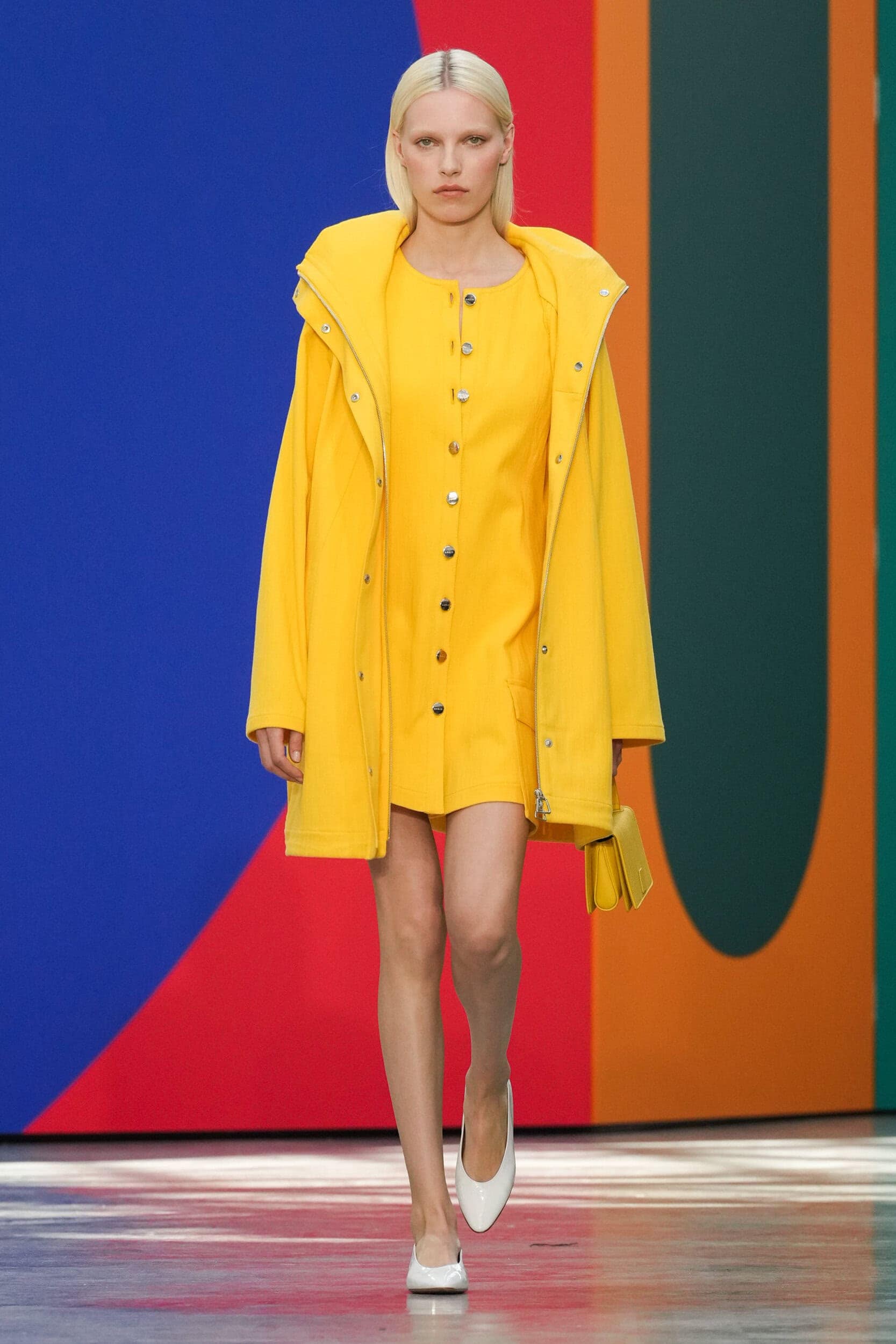
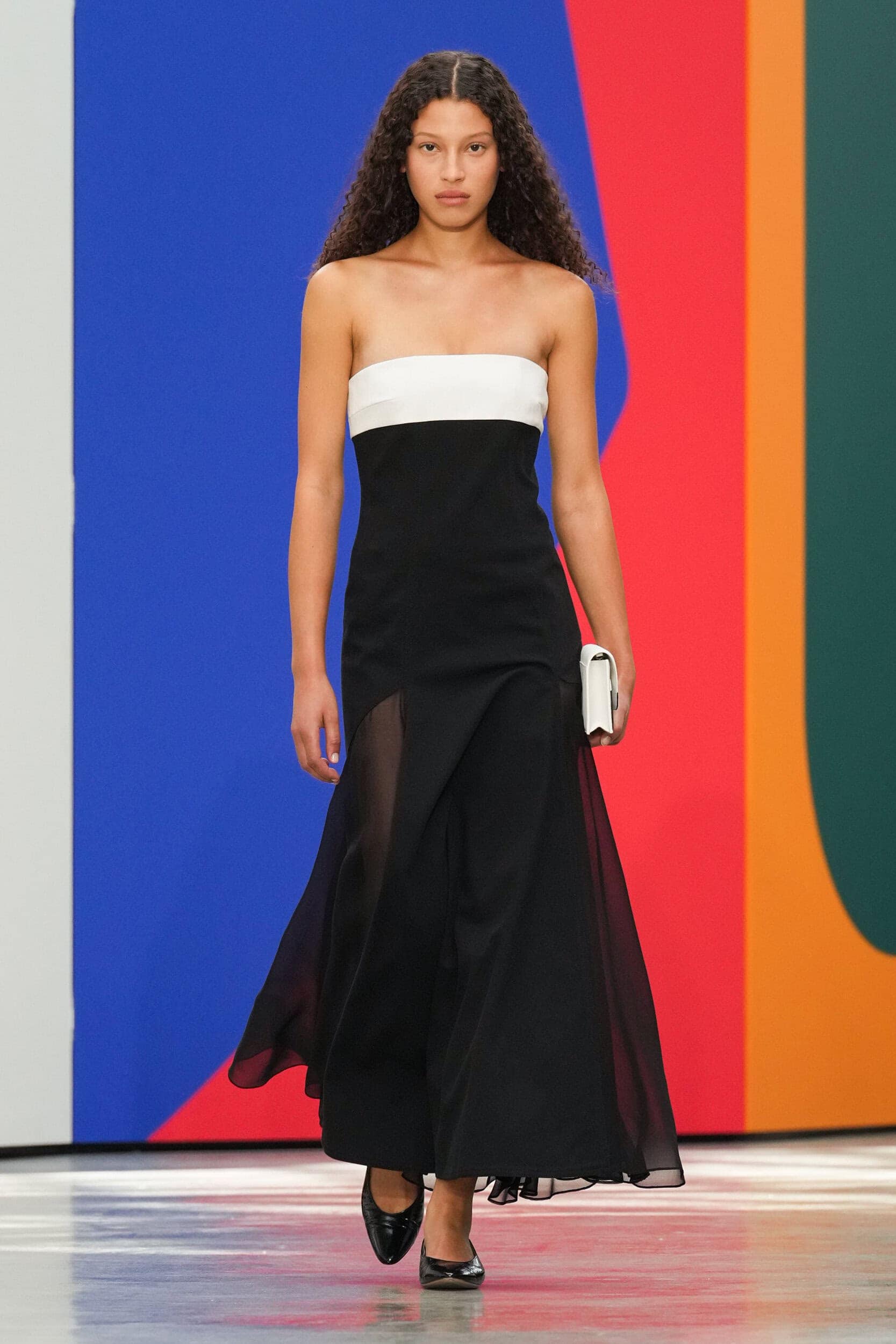

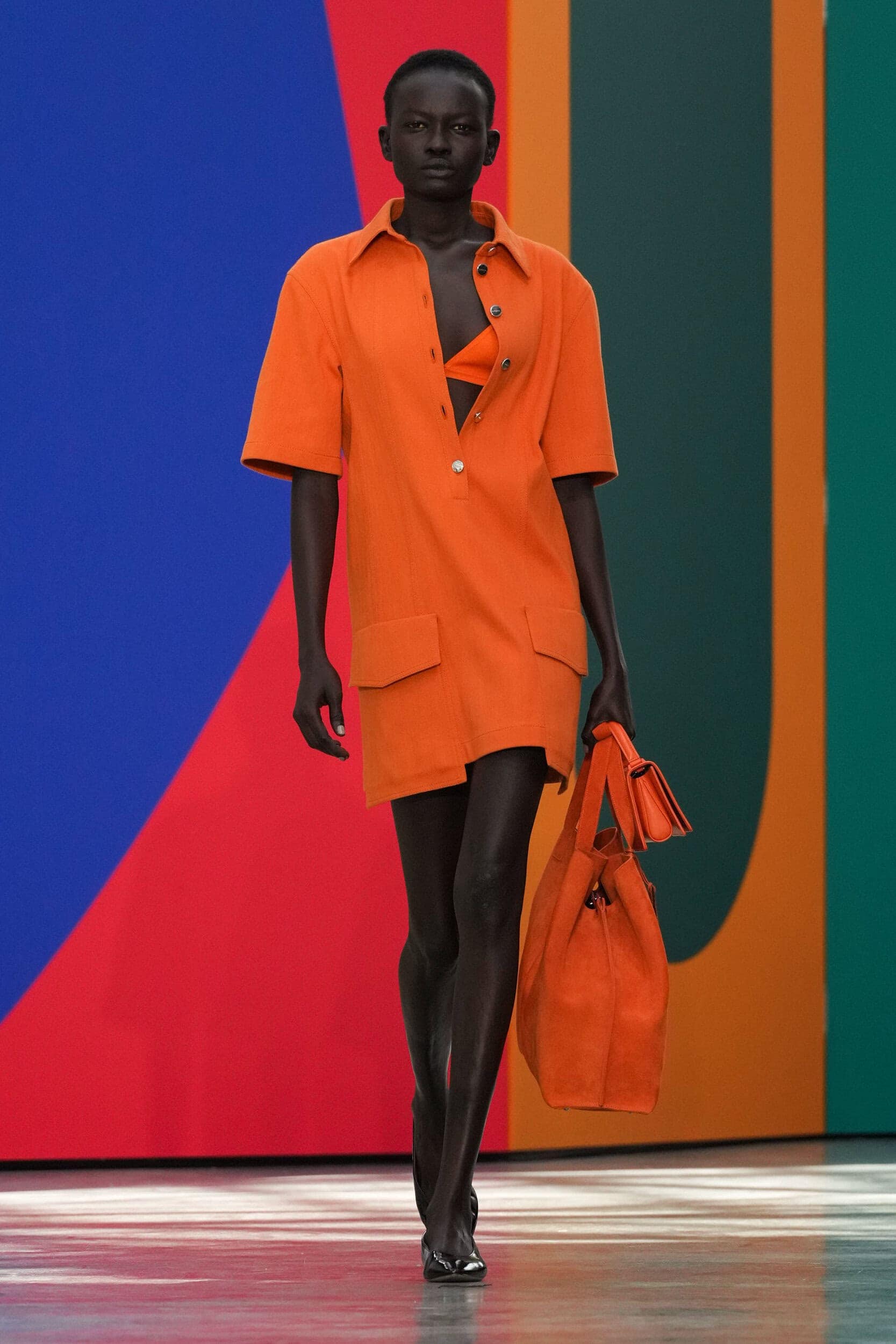
In his hands, Akris becomes more than a house of quiet luxury; it becomes a lens through which to see the future of art and design, translated into coats, dresses, and textiles that carry the weight of thought with the ease of wear.
As the show began, the parabola unfolded not only on the runway but in the philosophy behind it: discrete parts joining into a whole. Kriemler, with his characteristic intellect and humility, once again reminded fashion that the line between art and clothing is not a boundary, but a shared space.
